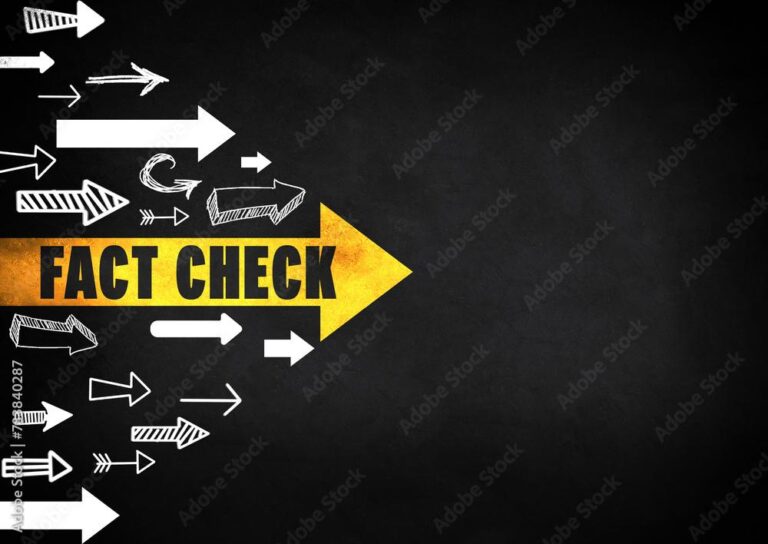Understanding the Impact of Misinformation Amidst Military Tensions
Considering escalating hostilities between India and Pakistan, recent military actions have sparked extensive media coverage and online discussions. However, this surge in details has been accompanied by a meaningful amount of misinformation circulating on social media platforms, raising questions about the authenticity of various claims. As debates surrounding national security grow more intense, it is essential to differentiate between fact and fiction. This article critically examines the recent accusations regarding India’s military operations in pakistan, utilizing verified data and expert insights to dispel the false narratives that have emerged in their wake. Our goal is to provide clarity during this tumultuous period, ensuring readers are armed with accurate information when misinformation can spread as swiftly as news itself.
The Effect of Misinformation on public Opinion After Military Engagements
The aftermath of military engagements often creates fertile ground for misinformation, which can severely skew public perception. In the context of India’s recent strikes against Pakistan, a rapid spread of misleading narratives has intensified tensions and polarized views across social media channels. Much of the shared information lacks credible sources, resulting in widespread confusion among citizens regarding the actual circumstances at hand. The emotional toll from such misinformation fuels anxiety, reinforces existing biases, and obstructs meaningful dialog about the conflict.
Moreover, the ramifications of misinformation extend beyond immediate emotional reactions; they pose significant risks to both national and international stability. The proliferation of false information can lead to:
- Heightened animosity: Misunderstandings about intentions may escalate hostility between nations.
- Misdirected policies: Erroneous information could sway governmental actions towards increased military readiness or reactive strategies.
- Civil disorder: Misinformation might provoke protests or riots driven by distorted narratives rather than factual accounts.
| Misinformation Type | Potential Consequences |
|---|---|
| Civilian casualty rumors | A surge in public outrage demanding accountability |
| Incorrect troop movement reports | Panic without justification leading to altered geopolitical landscapes |
| Spoofed official statements | Erosion of trust in government institutions and media outlets |
As events continue to unfold, it is crucial for journalists and community leaders to emphasize fact-checking practices alongside responsible reporting methods aimed at counteracting misinformation’s effects. Raising public awareness about reliable sources while promoting critical assessment skills for shared content are vital steps toward nurturing an informed populace capable of navigating complex international conflicts effectively.
examining Social Media’s Role in Spreading Falsehoods
The rise of social media platforms has transformed how quickly both accurate and misleading information spreads globally. Following incidents involving India and pakistan’s militaries, numerous instances of disinformation have flooded various channels online—intensifying tensions while fostering hypernationalistic sentiments among users. The viral nature often seen with emotionally charged images or videos allows false narratives to gain traction almost instantaneously; these platforms not only encourage interaction but also facilitate rumor propagation that leads to public confusion.
This phenomenon raises serious concerns regarding online reliability during crises; consider these factors illustrating social media’s influence on shaping perceptions:
- Pace: Information circulates faster than customary news outlets can report it.
- User engagement: Audiences tend toward sensational content that amplifies its reach substantially.
- Anonymity factor:The lack thereof enables individuals sharing unverified claims without fear or accountability for their actions.
A closer look at key incidents related specifically within this conflict reveals how pervasive false news can be:
| Incident Description | Date Occured | False Narrative Presented | Source Identified as Misinformant(s) |
|---|---|---|---|
| Airstrikes Reported Over Pakistani Territory | February 2023 | Claims made by India asserting total destruction inflicted upon military installations | Unverified Social Media Accounts |
| Casualty Figures Released | February 2023 | (Falsely claimed) ten thousand soldiers lost lives due solely from airstrikes. | (Fake News Websites) |
| (Allegations Regarding) Troop Mobilization along Borders<td february<2023< td (Claiming) Indian forces were being mobilized along borders.< td (Anonymously sourced Twitter Posts) |
The exchange rate concerning inaccurate data poses threats not only towards understanding but also impacts diplomatic relations internationally—making it imperative we promote enhanced literacy around media consumption habits amongst users today! Empowering individuals through education will allow them better discernment when evaluating sources before sharing perhaps harmful content during volatile situations like these!
Strategies for Advancing media Literacy & Fact-Checking efforts Â
Â
Â
Â
Â
 Â
 Â
 Â
 Â
 Â
 Â
 Â
 Â
 Â
Â
Â
Â
In our current age where disinformation spreads rapidly across digital spaces—it becomes increasingly vital we enhance overall levels pertaining specifically towards understanding what constitutes credible versus dubious source material available out there! Educational institutions alongside community organizations must collaborate effectively creating engaging programs designed empowering individuals’ abilities discerning reliable resources from unreliable ones! Implementing strategies such as:
- (Workshops/Seminars): Regularly hosting sessions teaching techniques identifying fake news/understanding broader landscape surrounding modern-day journalism!
- (Interactive Online Courses): Developing eLearning modules providing practical exercises focused around fact-checking/source evaluation skills!
- (Promoting Fact-Checking Resources): Making reputable websites/tools accessible assisting users verifying incoming/outgoing pieces circulating within their networks!
- (Interactive Online Courses): Developing eLearning modules providing practical exercises focused around fact-checking/source evaluation skills!
Moreover collaborating directly with major players operating within social networks remains crucial combating misrepresentation right at its origin point! Technical measures flagging erroneous claims combined educational banners informing audiences potential inaccuracies could greatly reduce dissemination rates associated misleading materials found throughout cyberspace today!
Consider initiatives like:
| <Initiative>< Description></thead > < <Content Alerts>& lt;/bold>& lt;/t d>&& Notify users encountering possibly deceptive info.& lt;/t d>&&& (<Partnerships w/fact Checkers>& lt;/bold>& lt;/t d>& ) Collaborate independent organizations evaluating trending stories.& && & (<Educational Campaigns>& lt;/bold>& lt;/t d>&& < t d style=“text-align:left”) Launch campaigns promoting critical thinking/media literacy principles.& & nbsp; | |
|---|
<h2 id=”conclusion-the-path-ahead"conclusion: Navigating Forward Amidst Disinformation Challenges/h2
The swift circulation surrounding fabricated reports following India's operations against Pakistani targets highlights just how vital accurate intel becomes especially during times fraught with conflict! As battles rage between truth vs lies—both journalistic entities/social networking sites must remain vigilant verifying facts counteracting hazardous rhetoric capable escalating already tense situations further still impacting diplomatic ties/regional stability adversely over time if left unchecked!
As developments progress forward—it remains paramount audiences approach sensationalist assertions skeptically relying instead upon trustworthy outlets delivering factual updates consistently throughout ongoing crises faced globally today!
In an era where knowledge travels fast—we all share duty distinguishing reality from fabrication!




